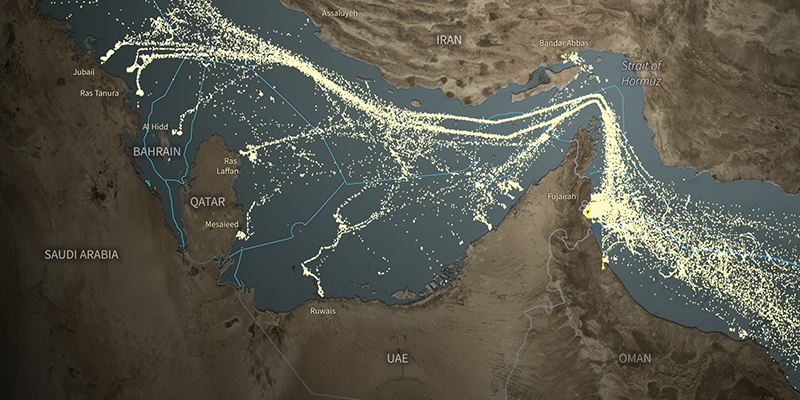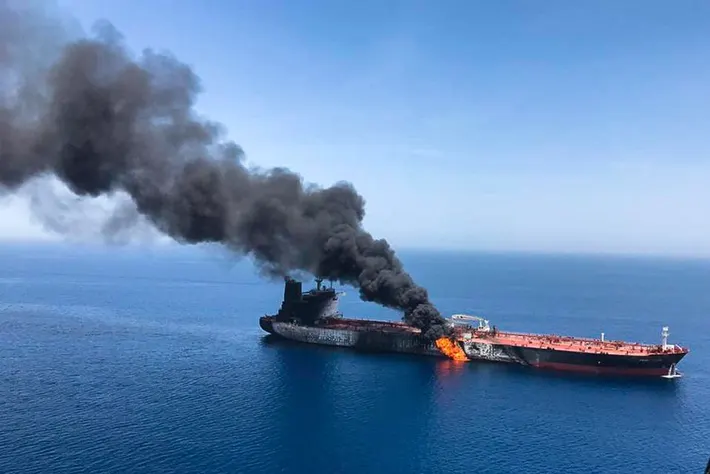Strait of Hormuz 2025: What Happens if It Closes Tomorrow?

In recent days, escalating threats between the United States and Iran have thrust the Strait of Hormuz back into the global spotlight. For those unfamiliar with this narrow waterway, it’s more than just a geographical feature—it’s a critical artery for the world’s energy supply and a potential trigger for economic chaos. As an analyst, I’ll break down what the Strait of Hormuz is, where it’s located, why it’s Iran’s trump card, and what its closure could mean for everyday people, governments, traders, and investors worldwide.
About the Strait of Hormuz
- Geographical Location: The Strait of Hormuz lies between the Persian Gulf and the Gulf of Oman, with Iran dominating its northern coast.
- Length: Approximately 167 kilometers (though some sources cite 39 kilometers at its narrowest point).
- Width: Varies between 33 and 95 kilometers.
- Depth: Reaches a maximum of about 60 meters at its deepest point.
- Key Islands: Includes Qeshm, Larak, and Hormuz, located near or within the strait.
- Economic Importance: Over 20% of the world’s oil and 30% of liquefied natural gas (LNG) pass through this strait.
- Strategic Significance: It serves as the primary trade route connecting Asia, the Middle East, and Europe.
- Global Consequences: Closing the Strait of Hormuz could drive oil prices above $200 per barrel and disrupt the global economy.
- Climate: The region features a hot and humid climate, impacting maritime traffic.
- Marine Life: The strait is home to a diverse range of fish and marine species.
- History: The Strait of Hormuz has been a vital trade route since ancient times.
What Is the Strait of Hormuz and Where Is It ?

The Strait of Hormuz is a narrow maritime passage connecting the Persian Gulf to the Gulf of Oman, nestled between southern Iran to the north and the United Arab Emirates and Oman to the south. See its exact location on Google Maps. Spanning roughly 39 kilometers (21 nautical miles) at its narrowest point and stretching about 167 kilometers in length, this strait is the only sea route linking oil-rich Gulf nations to the open ocean. Its depth, reaching up to 60 meters in some areas, allows massive oil tankers and cargo ships to traverse it daily. Curious about the historical naming of this region? Check out Persian Gulf Name: History and Truth for a deeper dive.

For the average person, this might sound like a distant waterway with little relevance. But consider this: over 20% of the world’s oil consumption—approximately 17-21 million barrels per day—flows through this chokepoint. It’s not just oil; a third of the world’s liquefied natural gas (LNG) and a vast array of goods, from industrial materials to consumer products, rely on this route. In short, the Strait of Hormuz is a lifeline for global trade and energy security.
Why It’s Iran’s Strategic Ace
The root of this escalating tension lies with the United States, which has a long history of igniting conflicts across nations under flimsy pretexts—be it the so-called fight against terrorism or curbing alleged weapons programs. Just as it unconditionally backs Israel despite its aggressive actions, the U.S. is now amplifying Iran’s nuclear ambitions—claims Iran insists are peaceful—as a justification for economic pressure and military threats. This could push Tehran to a breaking point, potentially forcing it to close the Strait of Hormuz in self-defense. For more on how these tensions could spiral, see Iran-US War 2025: Oil at $150 Impact.

Iran, commanding the strait’s northern shore and key islands like Qeshm and Hormuz, stands as one of the world’s formidable military powers, with the proven capability to control this vital waterway. For Iran, the Strait of Hormuz isn’t just a passage—it’s a strategic lever against external aggression. Yet, if this chokepoint were shut, plunging the world into economic chaos, the blame wouldn’t rest with Iran but with the U.S., whose provocative policies set this domino effect in motion.
It’s up to the rest of the world—from Europe to Asia—to rein in America’s belligerence and prevent a scenario where Iran has no choice but to play this card. Ultimately, the devastating fallout of a closure, from skyrocketing fuel prices to global market collapses, would be a direct consequence of Washington’s meddling, not Tehran’s defiance. For context on how colonial legacies fuel such conflicts, explore Why Middle East? Colonial Secrets.
The Fallout of a Closure: A World in Crisis
If the Strait of Hormuz were shut down tomorrow, the consequences would ripple across continents. Here’s how it could unfold, tailored to different audiences:

For Everyday People: Higher Costs and Uncertainty
- Energy Prices Soar: With 20% of global oil and 30% of LNG cut off, fuel prices could skyrocket. Analysts predict oil could exceed $200 per barrel, driving up costs for gasoline, heating, and electricity.
- Everyday Goods Get Pricier: From food to electronics, anything shipped or produced with oil-dependent supply chains would see price hikes, straining household budgets worldwide. Global inflation would surge as production costs rise, leaving people grappling with steeper prices for everyday essentials.
For Governments and Policymakers: A Diplomatic and Military Puzzle
- Energy Crisis: Nations like China, Japan, India, South Korea, and European countries, heavily reliant on Gulf oil, would face shortages. Alternative routes—like Saudi Arabia’s East-West pipeline or the UAE’s Fujairah bypass—exist but can’t fully compensate in the short term.
- Geopolitical Escalation: The U.S. and its allies might deploy naval forces to secure the strait, risking military confrontation with Iran. Meanwhile, countries like Saudi Arabia, Qatar, and Kuwait could panic as their economies grind to a halt.
For Traders and Investors: Market Chaos
- Oil Market Volatility: A closure would trigger a supply shock, sending oil futures into a frenzy. Major stock markets—Wall Street, London, Tokyo, and Shanghai—would face severe turbulence as industries from transportation to manufacturing falter. The U.S. Energy Information Administration tracks such oil flow disruptions for deeper insight.
- Mixed Fortunes: Shares of oil and energy companies might spike temporarily due to scarcity, but sectors like transportation, automotive, and manufacturing could crash under the weight of disrupted supply chains and higher costs.
- Investment Opportunities and Risks: Smart investors might pivot to alternative energy or safe-haven assets like gold, but the broader economic fallout would spare few.
Here’s a quick breakdown in numbers:
| Impact Area | Statistic | Potential Outcome |
|---|---|---|
| Oil Supply | 20% of global consumption | Prices exceed $200/barrel |
| LNG Exports | 30% of global supply | Energy shortages in Asia and Europe |
| Global Trade | 35% of Persian Gulf maritime | Supply chain delays, higher costs |
| Economic Dependency | 30% of world economy tied to it | Inflation, recession risks |
Regional and Global Players: Who’s Hit Hardest?

- Gulf States (Saudi Arabia, UAE, Qatar, Kuwait): These nations rely on the strait for nearly all oil and gas exports. A closure could slash government revenues, destabilize currencies, and spark domestic unrest. Beyond energy, Gulf countries would see their tourism and real estate sectors collapse—think Dubai’s luxury property market or Qatar’s post-World Cup boom—as a wave of foreign investors flees the region amid economic uncertainty.
- Asia (China, Japan, India, South Korea): With over 60% of their oil imports passing through, these industrial powerhouses would face factory slowdowns and energy rationing.
- Europe: Already grappling with energy diversification, Europe could see winter heating crises and industrial setbacks.
- The U.S.: Less dependent on Gulf oil today, America would still feel the sting through global market turbulence and allied pressure. For a broader take on oil market dynamics, consult Bloomberg’s Energy News.
What Happens Next? Scenarios and Solutions
If Iran closes the strait, the immediate aftermath would be chaos—but the world wouldn’t stand still. Traders might scramble for alternative suppliers like Russia or the U.S., though capacity constraints would limit relief. Governments could tap strategic reserves, but these are finite. Militarily, the U.S. might attempt to reopen the strait, escalating tensions into a broader conflict.
For the average person, the advice is simple: brace for higher costs. For investors, diversify now—don’t wait for the storm. For policymakers, diplomacy remains the best tool to avert this nightmare scenario, though recent U.S.-Iran rhetoric suggests that window is narrowing.
Conclusion: A Fragile Lifeline in a Tense World
The Strait of Hormuz isn’t just a waterway; it’s a geopolitical fulcrum where energy, trade, and power converge. Iran’s ability to threaten its closure is a stark reminder of how interconnected—and vulnerable—our world is. As tensions mount in March 2025, the question isn’t just whether Iran will play its card, but how the world will respond when it does. For now, all eyes are on this narrow stretch of water that could dictate our economic future.
- Do you think Iran will actually reach the point of closing the Strait of Hormuz, or is this more of a political pressure tactic?
